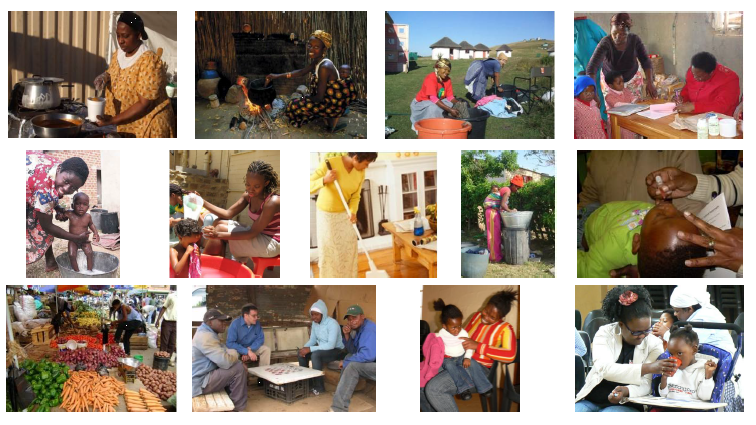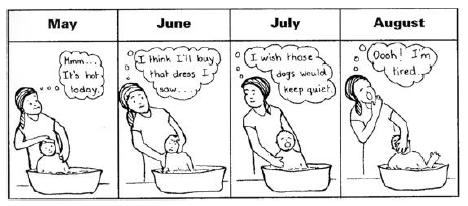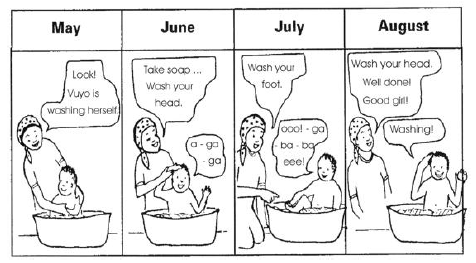Module 5: Everyday Activities
Page Outcomes[edit | edit source]
When you have finished this workshop, you should have a clearer understanding about:
- How to use everyday activities to develop your child with cerebral palsy.
- You should be able to explain this to others in your family or community.
Introduction[edit | edit source]
A carer is the most important caregiver for a child with cerebral palsy. Think about the time that is spent every day with the child, doing everyday things with her.
Here is a list of some everyday activities:
- Dressing the child
- Cooking, cleaning, and doing the washing going on an outing
- Toileting the child feeding your child
- Giving the child medication helping her get to sleep
- Visiting friends
- Playing with the child going to the clinic…
This is what the child needs to learn:
- Moving and balancing, using her hands,
- Communicating and interacting,
- Learning to be as independent as possible in self care activities, relating to others,
- Thinking and playing,
- Moving from place to place.
- With all the washing and feeding and dressing and giving medication and other things that you have to do with your child daily, you may already be very busy and feel quite stressed. And you may be caring for other children too.
A common thought is when the carer will find the time and energy to do a lot of exercises to help the child develop.
All of these daily things need to be done with the child anyway. So if they can do them in such a way that they are stimulating the child at the same time, this will help the child a lot with her development.
We will now learn how you can use these everyday activities to help your child develop. Look at these picture strip stories:
uMama KaSive:









